8 Web Creations That Bring Science to Life

In 1959, the chemist-cum-novelist C. P. Snow opined on what he saw as a cultural partition between the sciences and the humanities. Regardless of whether this divide was self-imposed or the product of institutional myopia, he encouraged more interplay between the two camps. Art and science, for example, have a lot to offer one another. Like a translator between foreign speakers, art makes it possible to convey the sophistication of science to a wider audience. And science is itself a profound source of art, as anyone who’s basked in the radiant images of Cosmos or been transported by the poetic prose of Carl Sagan can attest.
This alliance between the aesthetic and the descriptive can be traced back to a common heritage. Both are, at bottom, vehicles for human expression—windows into the human condition that reach across cultures and generations. What makes productions like Cosmos and the BBC’s Human Universe so extraordinary is that they appropriate our natural sense of wonder and connect it to a scientific vision of reality.
Today Dr. Snow might revel in what was for him an underexplored medium. Collaboration among artists and science communicators has blossomed in recent years, enabling us to disseminate scientific knowledge in fresh and innovative ways. Armed with an array of digital tools and a passion for science, several talented entrepreneurs have created some truly magnificent content and put it here on the web for all to enjoy. I’ve hand-picked this catacomb of treasures based on scientific merit, aesthetic quality and their ability to lend a sense of perspective.
1. Scale of the Universe
What better place to start than with a visualization that captures the entire observable universe—from the large and distant to the small and invisible? This incredible Flash animation was created by 14 year-old Cary Huang and his twin brother Michael. Spanning a massive 62 orders of magnitude, you’ll move from the quarks and neutrinos lurking beyond where our senses can take us and out to the cosmic reaches of the Crab Nebula and Barnard’s Loop. Best of all, you can click on each and every object for a pithy description or interesting factoid. Go ahead and spend a few minutes. I’ll even provide the soundtrack (click the music icon to disable the audio first).1
2. Cell Size and Scale
 Humans are primates adapted to seeing mid-sized objects. Anything shorter than ~0.1 mm in length is hidden from the naked eye, leaving us oblivious for most of our history to the tiny machinery powering life on earth. An animation created by the University of Utah’s Health Sciences department brings this subvisual world of cells, chromosomes and amino acids into sharper focus.
Humans are primates adapted to seeing mid-sized objects. Anything shorter than ~0.1 mm in length is hidden from the naked eye, leaving us oblivious for most of our history to the tiny machinery powering life on earth. An animation created by the University of Utah’s Health Sciences department brings this subvisual world of cells, chromosomes and amino acids into sharper focus.
In many ways, life is more interesting on this scale. Delve into the bustling environment of a cell and you will see millions of protein factories called ribosomes assembling amino acids spelled out in DNA; antibodies and enzymes scrambling to identify virus intruders and refortify cell walls; lysosomes flushing out unwanted bacterial toxins from nomadic strains like E. coli and Salmonella; hemoglobin proteins shuttling oxygen through the blood stream. Your cells are keeping you alive in a myriad of ways at any given moment, each unit working together like a well-trained platoon.
Also notice the middling stature of a sperm cell in comparison to an egg cell, not unlike a small comet in low orbit around an earth-sized planet. The rest of the content by the Genetic Science Learning Center is equally educational and worth checking out.
3. 100,000 Stars
Among the first submissions to the Chrome Experiments channel, 100,000 Stars remains to this day one of the most impressive examples of art interfacing with science. This interactive lets you leave our crazy world behind and embark on a tour of the nearest 119,617 stars, including 87 labeled stars like Arcturus and Gliese 570. Clicking on the name of each star will bring up a description paired with a magnified view, from which you can continue to the Wiki page or snap back to your previous zoom point. The amount of work that went into this—hacking together multiple data sets, the subtle use of rendering tools like like color shaders and lens flare—makes for one spectacular visualization. And to top it off, the music you hear is a previously unreleased track for the Mass Effect series titled “In A Strange Land,” scored by Sam Hulick and Jack Wall. Epic.
4. How Big Is Space?
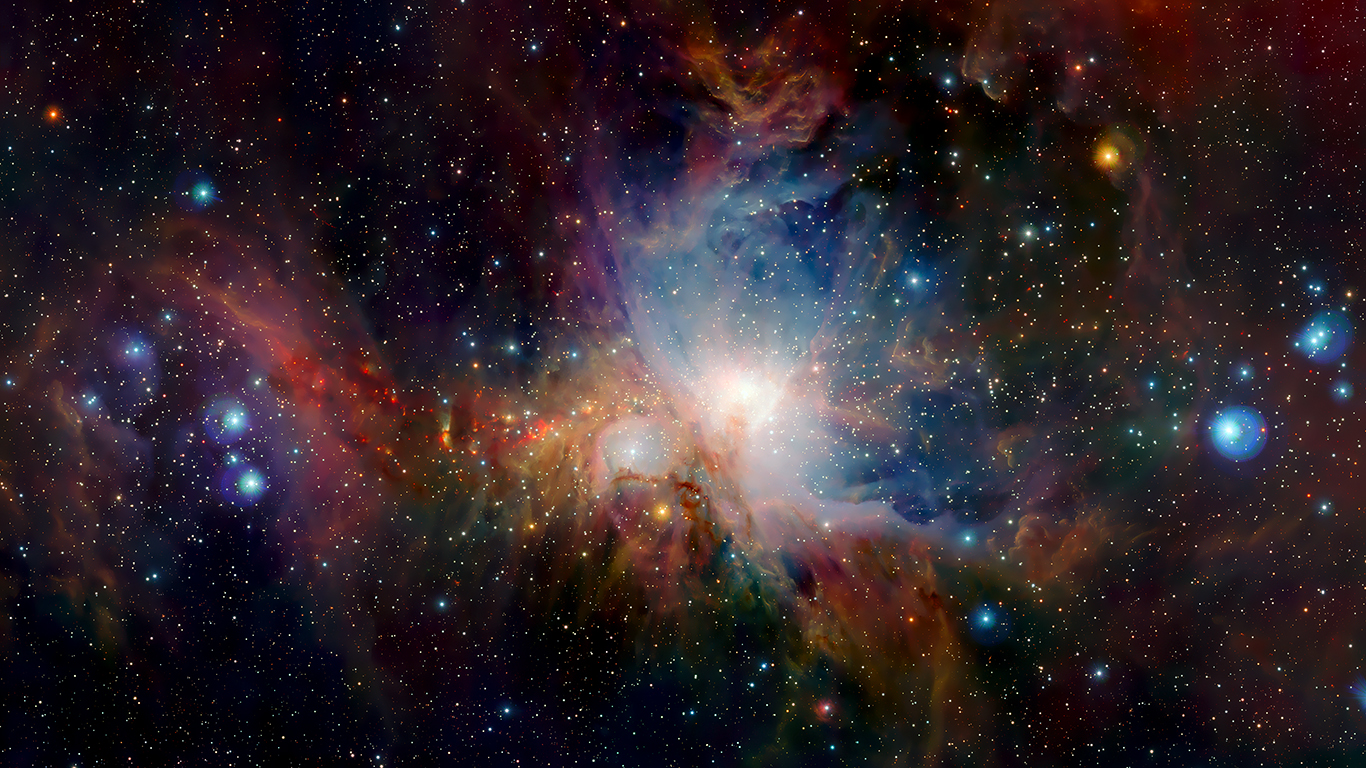 Here we are in this dark corner of the cosmos, aglow under a sun eight light minutes away, removed by some 25,000 light years from the center of our home galaxy. What we are seeing on the sun actually happened eight minutes ago. Our galaxy could be ripping apart at the seams and we wouldn’t know it for another 25,000 years. And light travels faster than anything in the known universe. How could we possibly grasp so much sky?
Here we are in this dark corner of the cosmos, aglow under a sun eight light minutes away, removed by some 25,000 light years from the center of our home galaxy. What we are seeing on the sun actually happened eight minutes ago. Our galaxy could be ripping apart at the seams and we wouldn’t know it for another 25,000 years. And light travels faster than anything in the known universe. How could we possibly grasp so much sky?
Even with scale-sensitive visualization, the Universe can overwhelm us with its imponderable size and scope. Thankfully, the BBC have put together a graphic that helps illustrate its vast spread in a way humans can more readily comprehend.
Catch up with Felix Baumgartner, who was dropped from the stratosphere at a height of 24 miles in 2012, clinching the world skydiving record.2 Venture out 134 million miles and meet up with Juno, NASA’S New Frontiers probe en route to Jupiter and slated to arrive in July 2016. Then fly out to Ceres, the largest asteroid we’ve yet glimpsed and the destination of Dawn, soon to be the first spacecraft to study a dwarf planet up close. Next zip over to the New Horizons spacecraft which has an appointment with Pluto in less than a year’s time.
Finally, at a distance of 12 billion miles, reunite with Voyager 1, the farthest object we’ve ever sent out into the Universe. After 37 years and counting, Voyager 1 is still transmitting, and NASA’s Jet Propulsion Laboratory is still receiving.
5. The Tree of Life
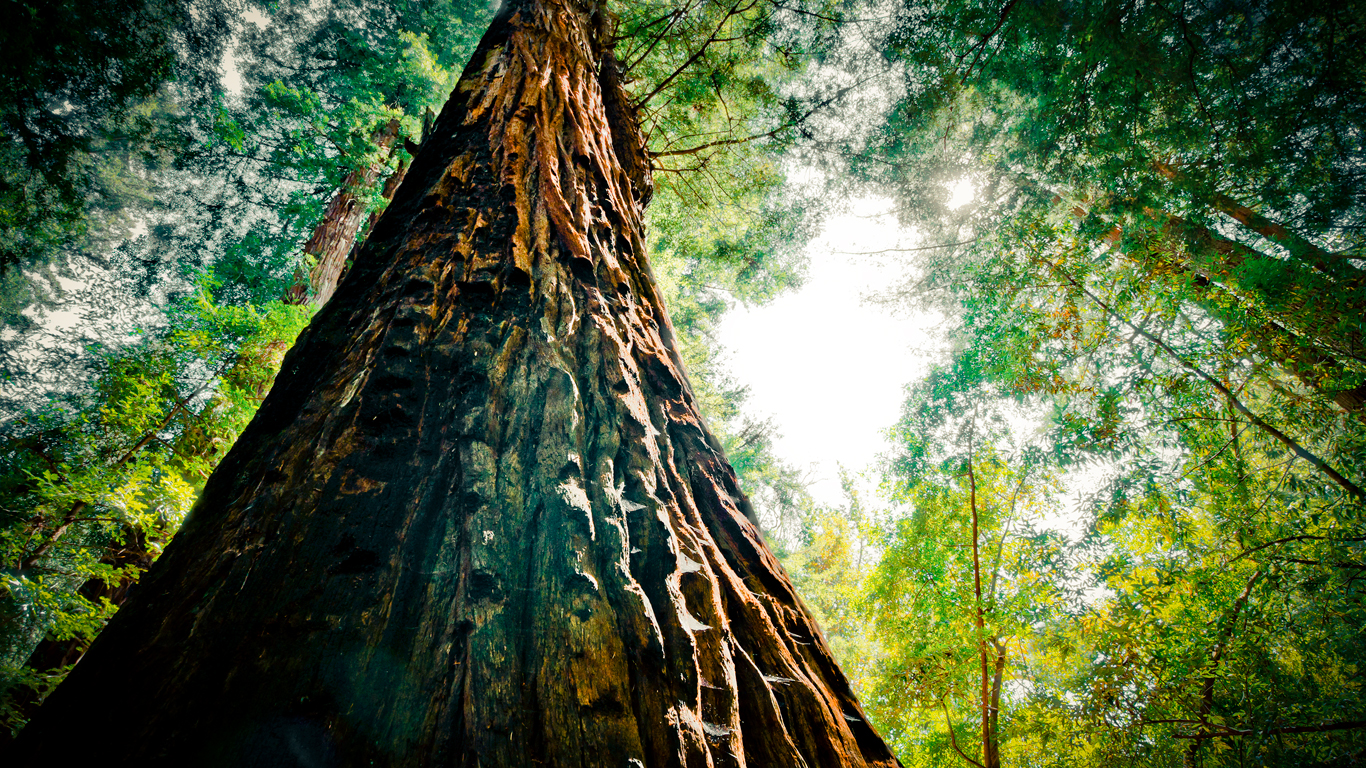 Common ancestry is a concept that lends itself especially well to illustration. An interactive created by the New Mexico Museum of Natural History and Science allows you to explore the evolutionary connections of life on earth. It relies primarily on sequence data, where available, and physical fossil evidence where it’s not.
Common ancestry is a concept that lends itself especially well to illustration. An interactive created by the New Mexico Museum of Natural History and Science allows you to explore the evolutionary connections of life on earth. It relies primarily on sequence data, where available, and physical fossil evidence where it’s not.
The hierarchical structure is instantly recognizable, arrayed in a three-domain system with the many interconnected branches subjacent. The pool of universal common ancestors towards the bottom of the graphic denotes the uncertainty surrounding the first life forms to emerge on earth. At this early stage, the branching concept breaks down due to rampant genetic swapping among nascent organisms. Over time, evolution stabilized to the point where different forms of life developed along more independent tracks. All in all, it’s a bird’s eye view that could use more detail, but every metaphor has its limits.
6. Kepler’s Tally of Planets
With every potentially habitable planet espied, Fermi’s paradox looms ever larger. It plays torture with our curiosity and claws at the deepest questions of existence. With each turn of the telescope we are tantalized by the unresolved quandaries and stygian enigmas that have haunted us for so long. We have climbed to the cosmic surface, and can feel our answers drawing near. Might, on just one of those faraway worlds, there be beings gazing back at us?
NASA’s Kepler observatory, first cast into space in 2009, has been a colossal success. The 2,300-pound planet hunter is tasked with identifying Earth-sized planets outside our solar system by detecting telltale dips in brightness from planet-like bodies passing in front of their home stars. As of October 2014, we’ve confirmed a total of 1,763 exoplanets, 992 of which were spotted by Kepler, with another 3,218 unconfirmed candidates.3 Many of these are expected to be within their star’s habitable zone, where water could exist in liquid form. Since Kepler samples only a sliver of the night sky, a few teams have spun the numbers and extrapolated that there may be billions of Earth-like worlds in the Milky Way alone. That’s quite a far cry from the nine planets we knew of by the time I entered grade school.
The NY Times have compiled a fantastic feature which tracks Kepler’s running tally. The catalog is organized by size of solar system and star temperature, and you can mouse over each star system to display the number of planets in orbit and any accompanying images or news stories.
In May of last year, a second of Kepler’s four reaction wheels failed, crippling its onboard precision and navigation gear. Never one to quit prematurely, NASA spent a year testing the functional equipment and declared the mission salvageable. They green-lighted the K2 campaign this past May, in which the spacecraft will continue its prime directive while expanding its scope to include study of star formation and supernova explosions. With more than 150,000 stars now surveyed by Kepler, the enormous backlog of data is sure to keep astronomers busy for the next several years.
7. Mars Curiosity Rover Tracker
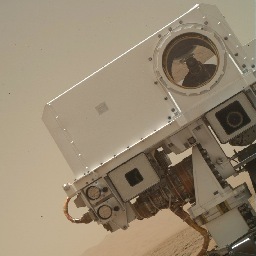 For such a desolate planet, there’s a lot happening on Mars right now. Two rovers plod its surface and a fleet of five research satellites ring its perimeter, though it’s fair to say that none have garnered the acclaim of Curiosity. In June the Curiosity rover celebrated its first Martian lap around the sun at 687 Earth days. And in August we celebrated its two-year anniversary on the vermilion planet since touching down in Gale Crater. For the last 780 days and counting, the robot that could has been beaming data and images back to Earth at an average distance of 140 million miles.
For such a desolate planet, there’s a lot happening on Mars right now. Two rovers plod its surface and a fleet of five research satellites ring its perimeter, though it’s fair to say that none have garnered the acclaim of Curiosity. In June the Curiosity rover celebrated its first Martian lap around the sun at 687 Earth days. And in August we celebrated its two-year anniversary on the vermilion planet since touching down in Gale Crater. For the last 780 days and counting, the robot that could has been beaming data and images back to Earth at an average distance of 140 million miles.
Thanks to another outstanding feature by the NY Times courtesy of NASA, you can take in every vista snapped by the rover. Each high-resolution image is an actual photograph from Curiosity‘s onboard optics. Beginning at Sol 0, relive its slow (it boasts a maximum speed of 300 ft per hour) and measured traversal of the barren wasteland as it chases signs of life and biopsies its geology. What thrilling secrets might be unearthed as it inches its way up the ridge of Mount Sharp?
8. Rosetta Space Mission
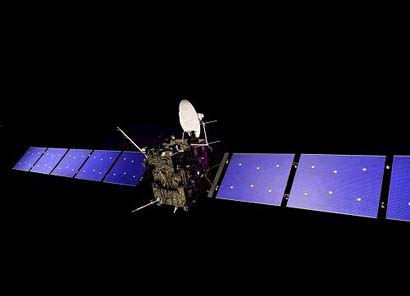 The clock ticks closer to an encounter of the first kind. Next month the ESA’s unmanned Rosetta will drop a robotic lander onto the surface of a 22 trillion-pound comet. The target, known as 67P/C-G (short for 67P/Churyumov–Gerasimenko), circles the sun every six and a half years and is expected to yield new insights into comet geology, the origins of our solar system, and of life on Earth.
The clock ticks closer to an encounter of the first kind. Next month the ESA’s unmanned Rosetta will drop a robotic lander onto the surface of a 22 trillion-pound comet. The target, known as 67P/C-G (short for 67P/Churyumov–Gerasimenko), circles the sun every six and a half years and is expected to yield new insights into comet geology, the origins of our solar system, and of life on Earth.
A rendezvous between comet and machine is easily one of the most daring technological and logistical feats of spaceflight ever attempted. For two and a half years of its ten-year voyage, ESA powered down Rosetta’s onboard electronics so as not to deplete its solar energy reserves while it stalked its prey in deep space. That extended slumber was interrupted in January to prepare for the most harrowing stage of the mission, set to commence on November 12. Signals sent from Earth will require tens of minutes to reach the probe orbiting several hundred million miles away. After separation, the lander will fire two harpoons into the comet proper to secure a safe landing. Once aboard it will unleash its full armamentarium of survey gear, including an industrial drill and a suite of spectrometers and magnetometers for measuring chemical composition and magnetic field strength, respectively.
A team called INOVE have written a 3D model representing the Rosetta timeline. For Android owners, this was also released as an app. Finally, a short film featuring the sleek Rosetta in CGI form recently aired at the British Film Institute: Ambition.
Honorable Mention
Two Years On Mars: This might be the coolest piece of science content The Verge has put out there. It’s a before-and-after diorama of the Curiosity rover after its two-year stint on Mars. As durable and well-engineered as the rover might be, it still took a beating from Mars’ rough-and-tumble landscape. Save for a memory glitch in one of its onboard computers in 2013, and generous amounts of dust, none of the wear and tear has proved mission-critical, however. This “Hack Week” feature by The Verge is an excellent use of technology to which more multimedia should aspire.
What creative presentations of science have you come across? Leave them in the comments below!
- As this graphic was created in 2012, two minor updates are in order (there may be others):
– The genus Megavirus is no longer the record-holder in terms of either genome size or capsid diameter. The Pandoravirus, discovered in July 2013, is now the largest known genus as a measure of DNA, while Pithovirus, first described in 2014, is now the largest by measure of capsid diameter.
– Thanks to the discovery of the Hercules–Corona Borealis Great Wall (Her–CrB GW) in November 2013, the Sloan Great Wall is now the sixth largest known object in the observable universe. [↩]
- That record has since been eclipsed by Alan Eustace, senior vice president of Google, whose 25.7 mi (135,890 ft) plunge on October 24, 2014 is now the highest free fall jump on record.
[↩]
- You can export the full database to Excel here. [↩]

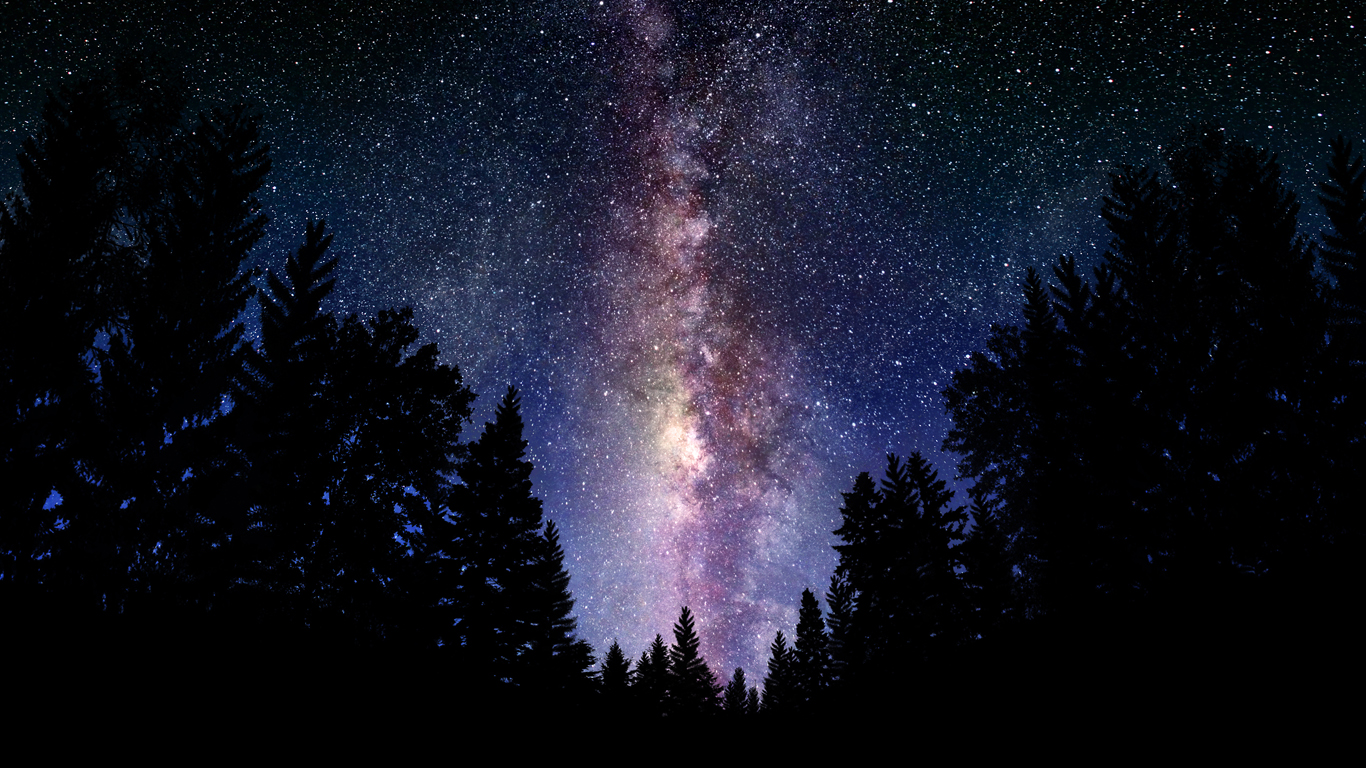

Comments